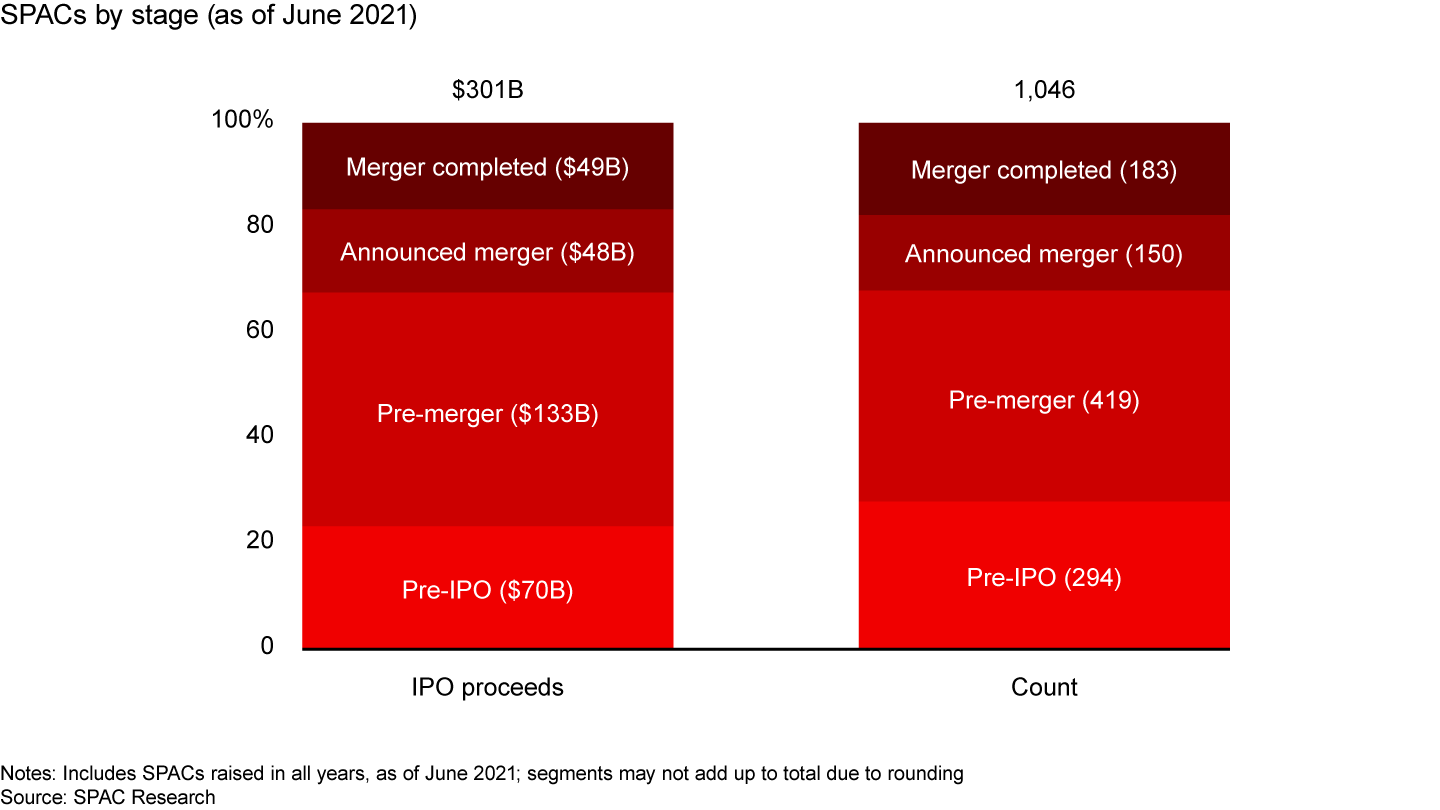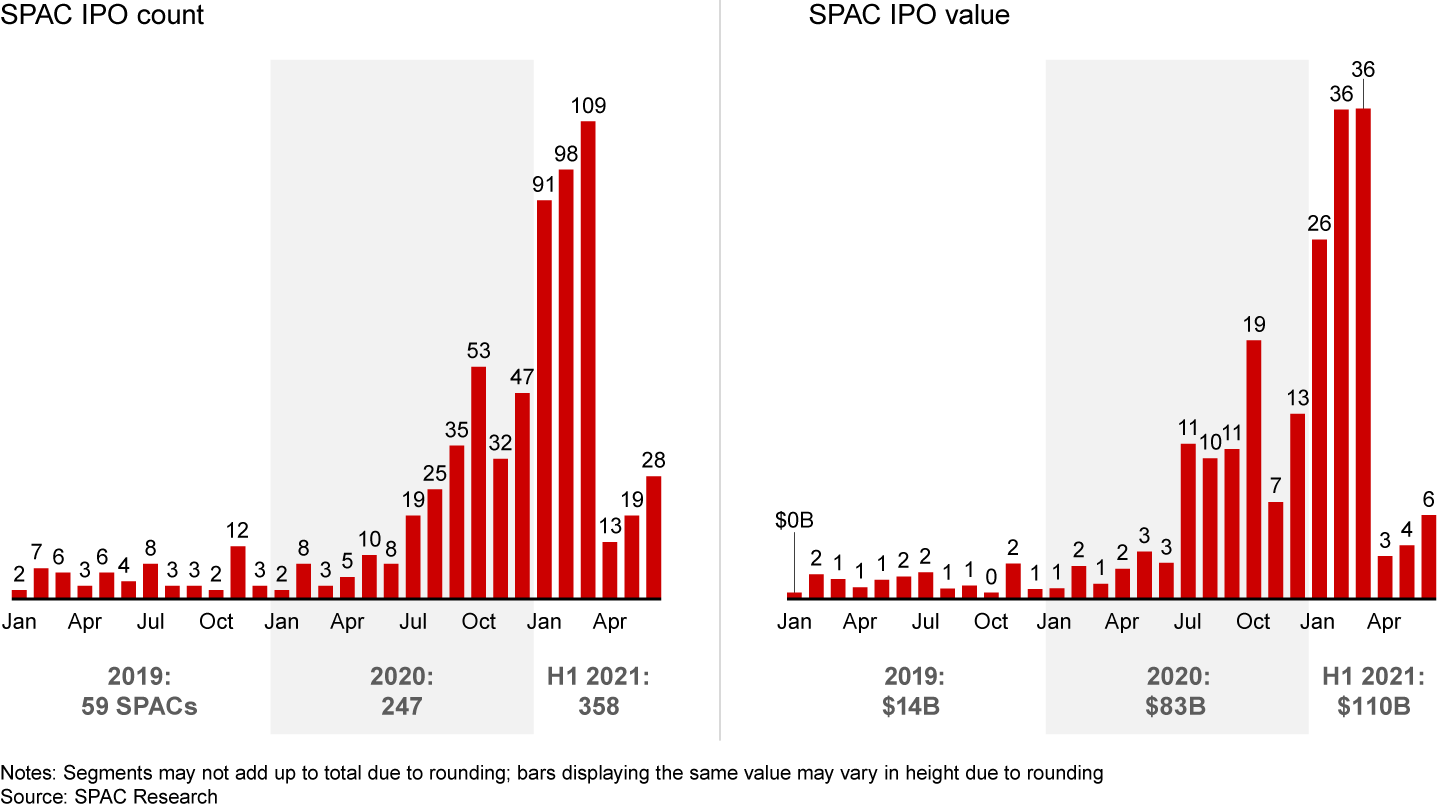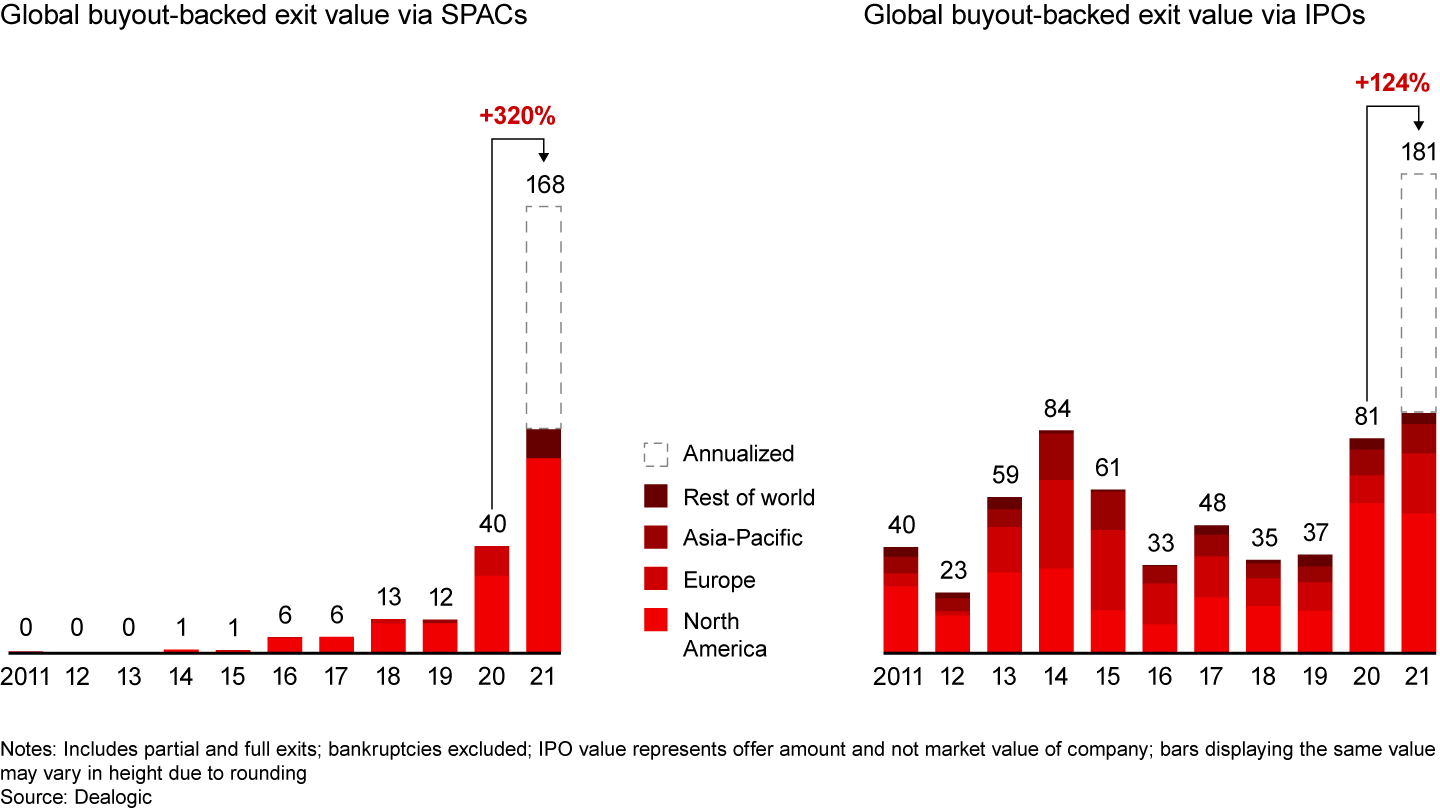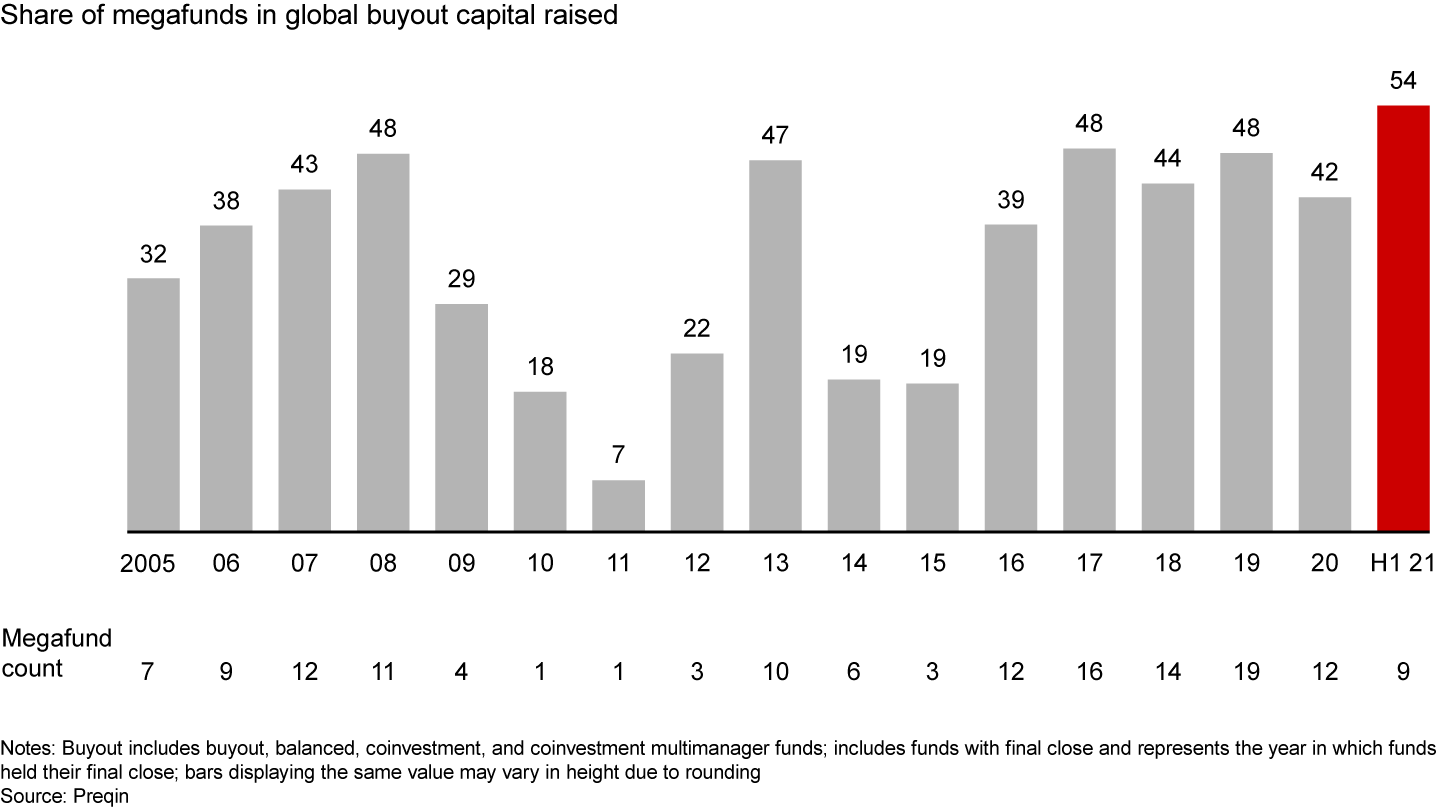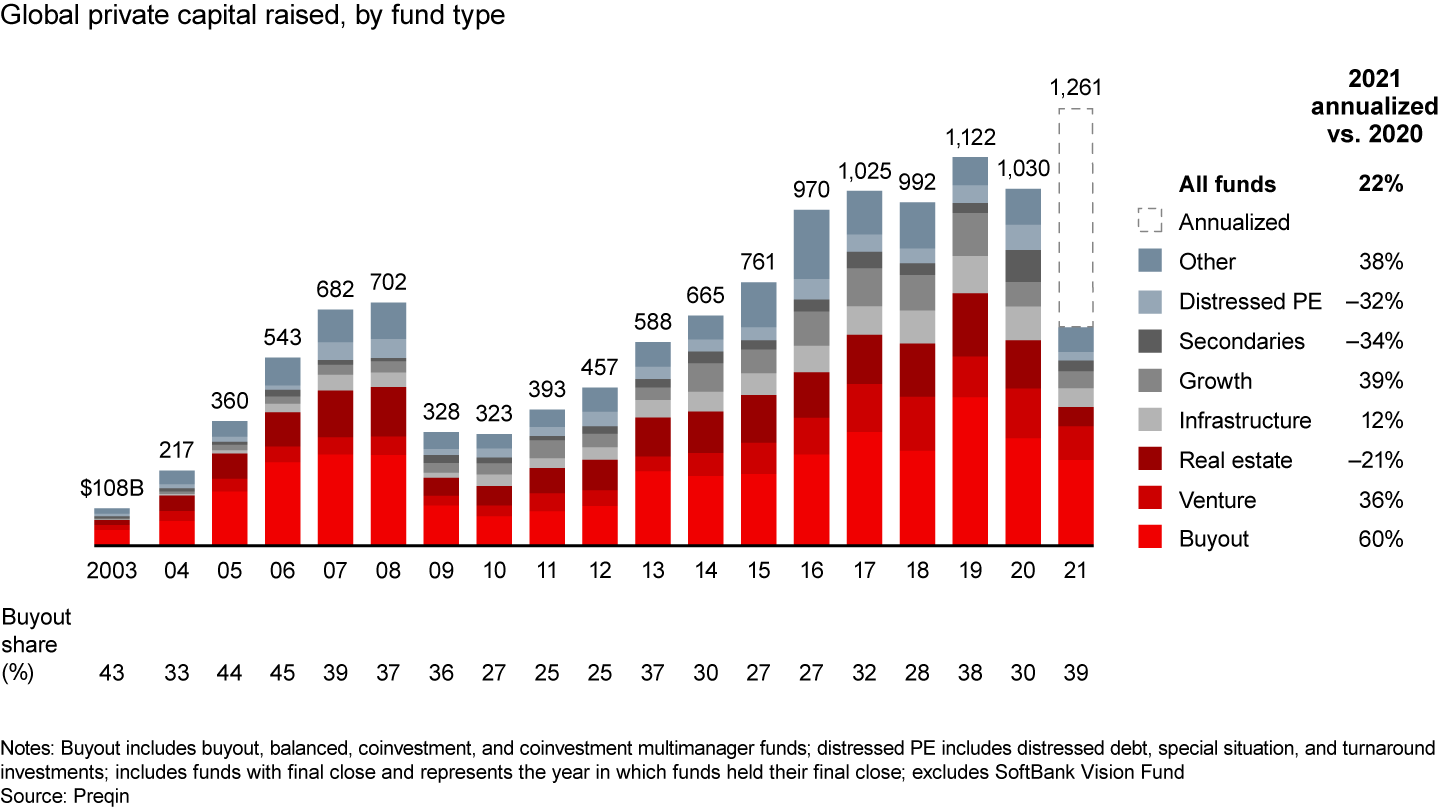Brief

Let’s be honest: At this time last year, when Covid-19 was still casting a long shadow over the global economy, would anybody in the private equity industry have predicted that 2021 had the potential to blow the cover off the record books?
We noted then that the deal market was showing surprising strength as massive government stimulus kept economies and markets humming around the globe. But the pace of recovery has been extraordinary, and, by almost any measure, 2021 is setting up to be by far the best year in the industry’s history.
It’s always dangerous to forecast the next six months based on the year’s first half, but private equity deal value, exit value, and fund-raising are all on pace to approach or cross $1 trillion by year-end (see Figure 1). If that bears out, the industry will have essentially tripled in size over the 10 years starting in 2011, powering through what turned out to be a brief Covid-19 shock. Private equity’s supersizing has created ever larger funds doing ever larger deals. And given that the industry’s mountain of dry powder stood at a new record of $3.3 trillion as of June 30 (around $1 trillion in buyout funds alone), there’s plenty of fuel left to drive new activity.
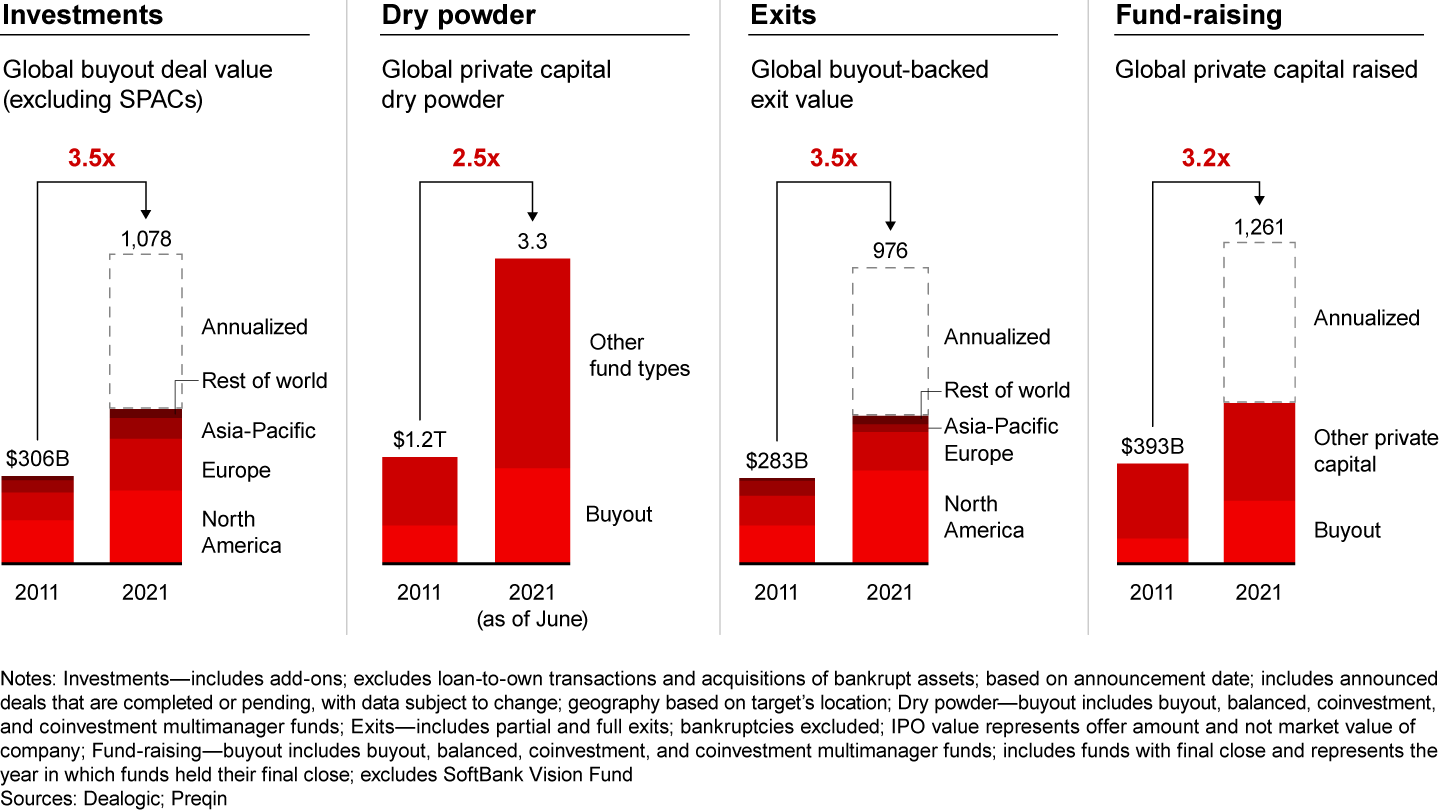
A torrid first half
Globally, private equity generated $539 billion in deal value during the first six months of 2021. That’s on par with the full-year average since 2016 of $543 billion. A full-year total above $1 trillion this year would dwarf the previous record of $804 billion, set in 2006 as the industry peaked before the global financial crisis (see Figure 2).
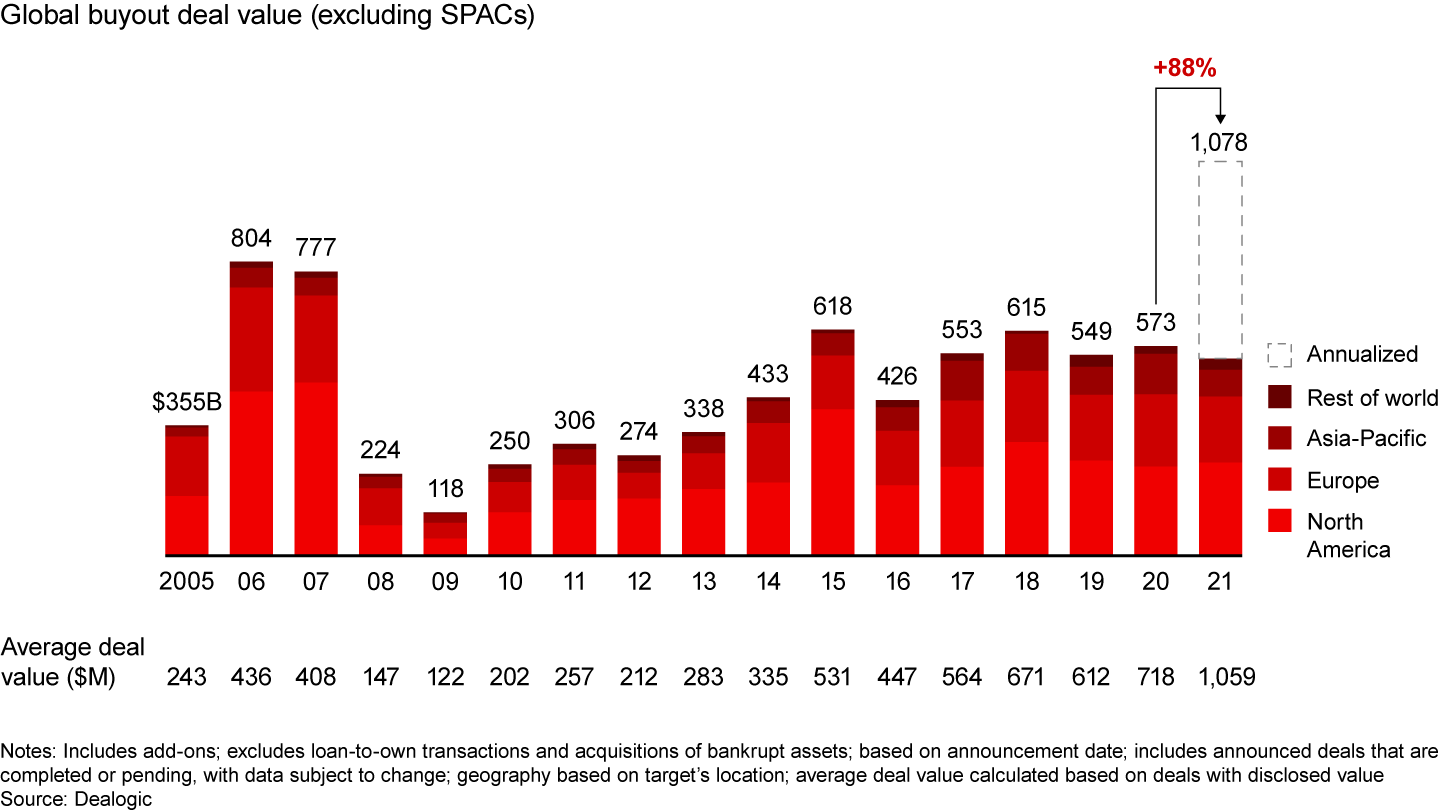
What’s clear is that deal size, not deal count, is behind the increase in value. The number of individual deals was tracking up 16% compared with the first half of 2020 after falling well short of the long-term average of 4,000 in 2020. But the average deal size spiked by 48%, from $718 million to $1.1 billion.
The strength in dealmaking showed up across the board, but the technology sector continued to dominate activity. One in every three buyout deals in the first half involved a tech company (most notably in software), and that probably understates tech’s growing appeal to investors. These numbers often leave out subsectors like fintech, tech-enabled services, and healthcare IT, which also drew heavy interest from PE investors. Given that tech means growth and growth means higher multiples, the bias toward investing in these sectors will likely continue in the months and years ahead.
SPACs still matter
The US market’s voracious appetite for SPAC-sponsored initial public offerings came to a sudden halt in April, amid increased regulatory scrutiny of these special-purpose acquisition companies (see Figure 3). But even if the volume of new SPACs remains at lower levels through the rest of the year, the $207 billion in SPAC IPO capital raised since January 2019 will continue to leave its mark on the private equity ecosystem.
As of June 30, SPACs had spent only $49 billion to close merger deals, and another $48 billion had been committed to announced mergers. That means 419 SPACs holding $133 billion are still looking for companies to take public (see Figure 4), presenting both challenges and opportunities for general partners (GPs).
The challenge is that some portion of that unspent capital will only add to the already fierce competition firms face when hunting through a limited supply of quality acquisition targets. This is especially notable given that the purchasing power of that $133 billion is actually some multiple higher; SPAC deals are typically leveraged with other forms of financing like private investments in public equity (PIPEs). The upside is that SPAC mergers will continue to create a strong exit channel for GPs seeking a fast-track entry to the public markets.
The rush to public markets
SPACs have already proven to be willing buyers of portfolio companies, helping juice the exit market in 2021. Global buyout-backed exit value through June 30 soared to $488 billion, or 10% higher than the full-year total in 2020, partly on the back of $84 billion in SPAC mergers. (SPAC transactions made up 24% of North American exit value.) Traditional IPOs also were on fire, accounting for $90 billion worth of exits (see Figures 5 and 6). This surge in public exits was mostly a North American phenomenon, driven by exceptionally robust public markets in the US. If that continues into the second half, the pace could push global exit value toward $1 trillion, essentially doubling the previous peak of $521 billion in 2014.
Private equity’s enduring appeal
Returning capital to investors at such a pace can only improve the appeal of private equity as an asset class. But limited partners (LPs) haven’t needed much encouragement to keep the flywheel turning. According to Preqin’s first-half Investor Outlook, approximately 90% of LPs say they plan to commit the same amount of capital or more to private equity over the next 12 months (see Figure 7). And over the first half of 2021, they turned the spigot wide open.
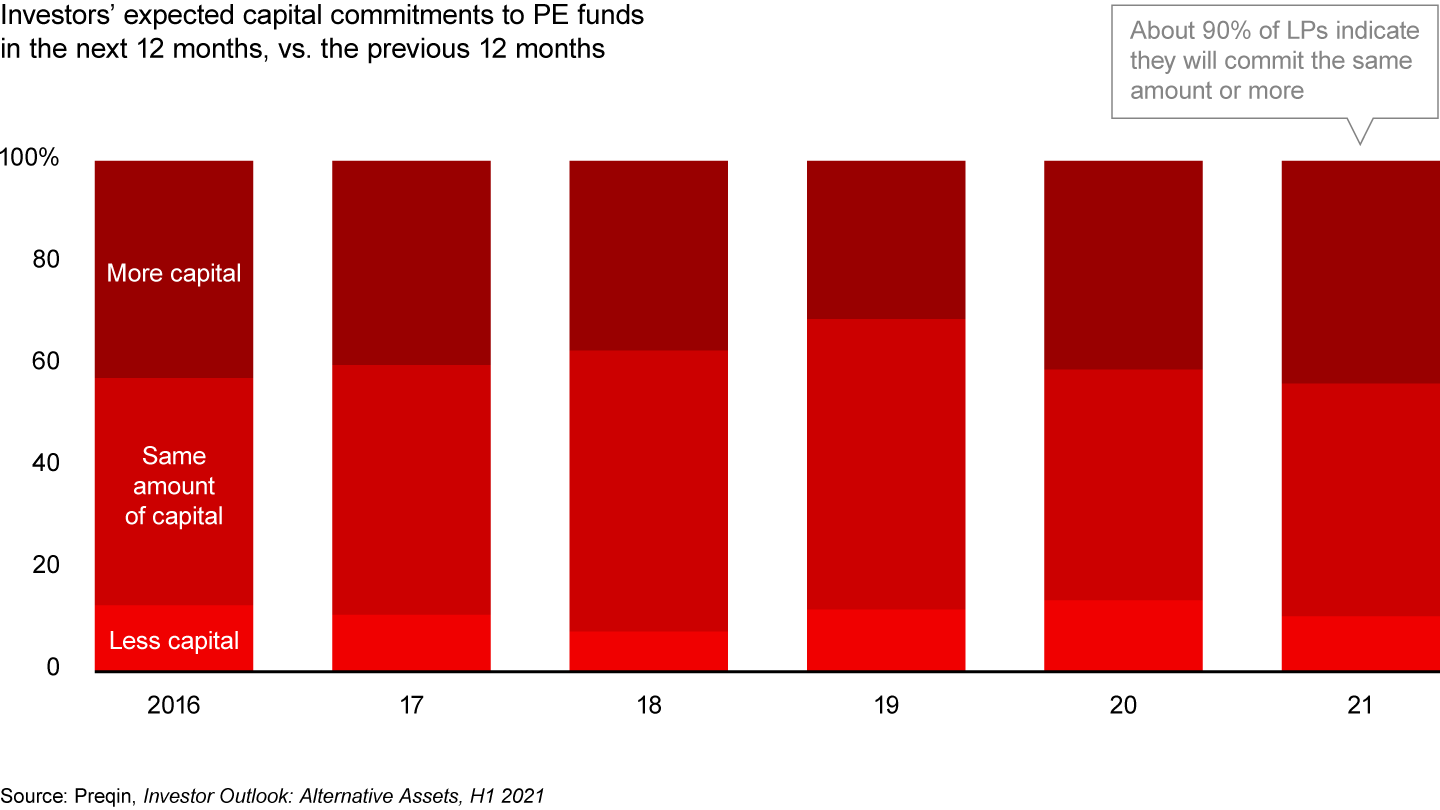
Overall, fund-raising was up to $631 billion in the first half, a pace that would push the year-end total close to $1.3 trillion (see Figure 8). Buyout, venture, and growth funds saw the biggest increases over 2020, while secondaries, distressed, and real estate funds fell off. The bias toward size among LPs has never been more apparent. Through June 30, just nine megafunds (those with more than $5 billion in assets) collected $120.4 billion, or more than half of all the buyout capital raised (see Figure 9). Most of them were household names—EQT, KKR, CD&R, Bain Capital—and they raised 17% more than they targeted, on average.
The road ahead
There’s obviously no way to know if the second half of 2021 will mirror the first, but there are a couple of key implications for private equity investors in the numbers we’ve seen so far.
First, despite the robust activity since January, we continue to see evidence of pent-up demand. As we noted in Bain’s Global Private Equity Report 2021, deal count (as distinct from value) has been below historical levels since last year.
The pace of dealmaking increased in the first half of 2021, and the market is on track to deliver around 3,700 deals by year-end. But that’s still below the 4,000 or so each year that the industry is used to. In the wake of the pandemic, GPs have struggled a bit to get smaller transactions closed, perhaps because of uncertainty in the markets or because the industry infrastructure has simply been overwhelmed with the volume of larger transactions. Either way, the deal numbers combined with the dry powder numbers indicate that many GPs are still in the market looking for targets or waiting to close transactions. That argues we will continue to see a surge in demand for new deals.
Second, fluency in technology is only becoming more important for every private equity investor. As we’ve seen, one in three buyouts now involves the traditional tech sector. But that’s only part of the story. Digital innovation is seeping into every subsector in the market, challenging GPs to ask themselves a critical question: What role does technology play in my chosen industries, and how should that affect my investment strategy?
Increasingly, it will pay to understand how tech is changing the competitive landscape and what companies can do to capitalize. GPs need to know how to assess the underlying technology of the assets they hope to acquire so they can underwrite risk and opportunity with confidence. When deals close, they need to know that their portfolio teams have the expertise to deploy technology to extract maximum value for all stakeholders.
Our crystal ball is as fuzzy as everybody else’s, and we don’t purport to know what the next 6 to 12 months will actually deliver. But the winds seem favorable. The forces that drove the first half’s extraordinary activity—supportive monetary policy, a relatively strong economy, soaring equity markets, and a mountain of dry powder—show no signs of weakening. Unless something changes, the momentum is likely to continue.
